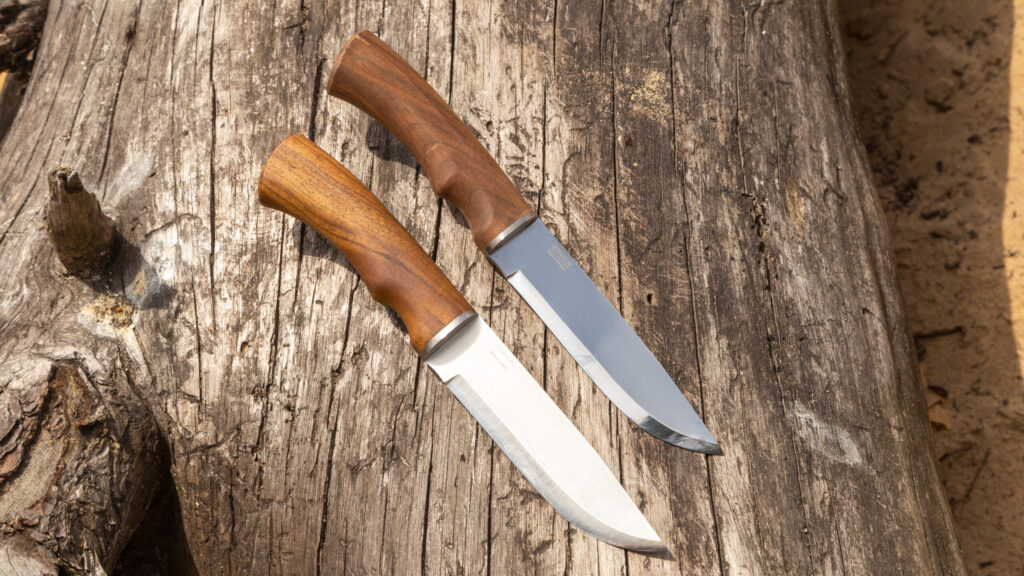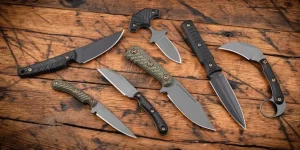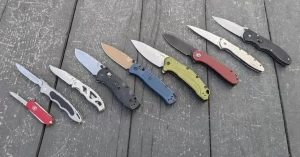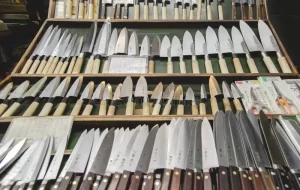Needless to say, a sharp knife blade goes way beyond merely being a knife that resides in one’s kitchen. It is used only while preparing meals for the family. It is a defining tool, an augmentation of one’s talent whether one is cutting vegetables, meat or shrubs in typical gardening or doing arbor work. A blunt blade is not only inconvenient but also unsafe to use. It entails applying too much pressure that poses a threat to getting cut. Caring for a knife blade will help to make it durable, sharp, and safe to use or handle when in its presence. This article will explore tips for maintaining the sharpness of a blade along with improper ways of doing it.
Why Knife Blade Maintenance Matters
A well-maintained knife blade:
Saves time: When the knife blades are sharp they do the required cutting job efficiently with less time as compared to blunt ones.
Increases safety: The student designs the car in a way that reduces pressure, therefore gaining better control.
Has value for your money: Quality knives are long-term products hence do not require frequent replacement.
If regular maintenance is not conducted it results in corrosion, chipping and wear of the blade that is irreversible. Let’s fix that.
1. Differences Between Sharpening and Honing.
Many people get confused between sharpening and honing although they have different functions.
Sharpening: Uses a honing rod to put the blade in proper alignment between sharpening. Do this weekly.
Sharpening: A process of fine and precise cutting of the material which must be done to give the new shape to the blunt edge of the knife blade. Do this 2–4 times a year, depending on use of the product. Inside the bag are shelves, hooks, pockets and accessories that have enough space to hold the Kindle and various items.
Whenever one wants to check sharpness, they may slice a piece of paper. It takes almost nothing to cut something with a sharp object. It almost feels like being sawn with a blunt object.
2. Choose the Right Sharpening Tools
Your tools determine results. Here’s a breakdown.
Whetstones (Best for Precision):
- Various types of sandpaper used are coarser for the cutting edges (200 to 800) and fine or polishing (1000 and above).
- After this, the stones have to be rinsed in water for approximately 10 minutes before using them.
- Maintain a 15–20° angle (most knives).
Electric Sharpeners (Fast but Aggressive):
- Good for minor problems but may cause over-grinding when employed incorrectly.
- Honing Rods (For Maintenance):
- The pure ceramic or steel rods are most suitable. Scrape the knife blade at an angle of 20°, in one side stroke 5-6 times and the other side 5-6 times.
- Do not use cheap pull-through sharpeners as they shave the knife blade metal off unevenly.
3. Master the Sharpening Technique
For whetstone users:
- Place the stone in a damp towel to avoid it slipping around during the process.
- Arrange the knife blade in such a way that the back side of the blade faces upward previous to beginning. In this way you can move the blade horizontally from one side of the fleece’s surface to the other.
- It shall be performed 10–15 times on each side up to the point that creates a burr on the metal ridge.
- As a final step you sharpen the blade with the help of a finer grit stone.
Common mistake: Rushing. Patience ensures even sharpening.

4. Clean and Dry Knife Blades Immediately
One cannot overemphasize the fact that moisture is the worst nightmare for a blade.
After use:
- Clean in warm soapy water (the use of a dishwasher leaves some discoloration at the edge of the knife).
- Pat dry with a soft cloth When it does get wet you should ensure to pat it dry with a soft cloth.
Storing knives:
- Do it in a knife block, sheath or having a strip; do not place them in a drawer unsheathed.
- In case of these blades made from stainless steel, you should use food-grade oil to minimize the risk of corrosion.
5. Avoid These Blade-Killing Habits
Better on hard surfaces: They refer to cutting on glass, stone or ceramic plates as this accelerates the dulling of the edges. Use wooden or plastic boards.
Storing wet: This air environment speeds the process of rusting.
Ace of blade: Some examples for improper usage of knives. Don’t use a knife to twist the lid off a can of canned food or cut the flesh off a frozen chicken.
6. Look for the professional assistance in case of following signs
Small chips, small cracks or if the knife blade remains stubborn after polishing. The services of a blade sharpening expert can help.
Final Thoughts
Mastery of the knife is not about perfection rather consistency. If you want to keep using your slicer for as long as possible and make each cut flawless, learn how to hone regularly. Sharpen mindfully and store your blade properly. It is important to note that practice and proper maintenance will give you a safe knife. In this way, you get a blade that provides you with companionship in every slicing, cutting and chopping.
This is the list of tips which is ready to use: Get your honing rod, sharpening stone and give your cutter their well-needed attention. That said, your next culinary dish or camping trip will surely be thankful for your company.
To Order Knives & swords Please Visit Our Website
Or




